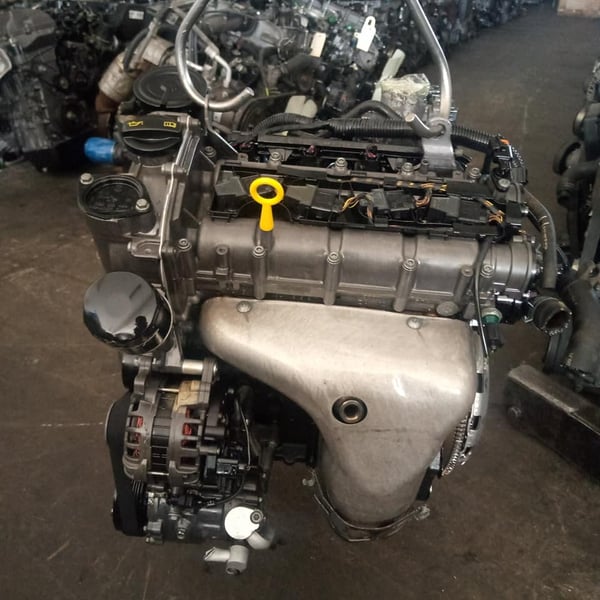Select a cutting-edge clp engine for superior results.
Select a cutting-edge clp engine for superior results.
Blog Article
Just How a Clp Engine Can Boost Performance in Numerous Industries
The arrival of CLP engines marks a significant change in operational performance across numerous industries, driven by their ability to optimize fuel intake and decrease downtime. Industries such as production and logistics stand to gain significantly from their durable layout and regular power output, which promise to improve procedures and boost efficiency. As companies significantly focus on sustainability alongside effectiveness, the duty of CLP engines ends up being a lot more important. What continues to be to be seen is exactly how these innovations will certainly shape the future landscape of commercial procedures and their effect on wider economic patterns (clp engine).
Overview of CLP Engines
CLP engines, or Continuous Liquid Propellant engines, represent a considerable advancement in propulsion innovation, especially for room applications. These engines use a continual feed system that allows for the continual expulsion of propellant, causing improved effectiveness and performance contrasted to standard strong or hybrid propulsion systems. By preserving a continuous circulation of fluid propellant, CLP engines can achieve a lot more accurate drive control, which is crucial for steering spacecraft in various goal circumstances.
The layout of CLP engines incorporates advanced products and innovative fuel monitoring systems. clp engine. This results in reduced weight and enhanced dependability, essential variables for long-duration space objectives. In addition, the continual procedure minimizes the threat of burning instability, an usual difficulty in standard rocket engines.

Benefits in Manufacturing
The manufacturing of Continual Liquid Propellant (CLP) engines presents several significant advantages that enhance both effectiveness and cost-effectiveness. One of the key advantages is the structured manufacturing process, which minimizes the intricacy linked with conventional propulsion systems. By utilizing fluid propellant, suppliers can attain greater accuracy in engine performance, causing maximized energy outcome and lowered waste.
In addition, CLP engines facilitate a higher level of modularity, enabling much easier assimilation into different manufacturing lines. This flexibility can significantly lower lead times and improve overall functional flexibility. Using CLP technology likewise has a tendency to minimize the requirement for substantial maintenance due to fewer moving components, which equates right into reduced downtime and functional prices.

Applications in Logistics
Leveraging Source Continuous Fluid Propellant (CLP) engines in logistics offers significant advantages in functional efficiency and reliability. These engines offer a durable option for numerous transport requirements, making it possible for the seamless movement of items throughout like this substantial ranges. The intrinsic design of CLP engines enables for consistent power result, which translates right into smoother and extra foreseeable transportation timetables.
One of the key applications of CLP engines in logistics is in heavy-duty freight transport, where they can drive both ground and airborne lorries. Their ability to preserve high performance under differing tons conditions guarantees that distribution timelines are met, therefore boosting client contentment. In addition, CLP engines can be incorporated right into automated logistics systems, promoting real-time monitoring and maximizing path planning.
In addition, the sturdiness of CLP engines lowers upkeep downtime, permitting logistics firms to optimize their functional capabilities. This is particularly valuable in warehousing procedures, where performance in managing and transferring goods is vital. As logistics proceeds to evolve, the combination of CLP engines stands for a forward-thinking method that not only boosts efficiency but also supports the market's growing needs for reliability and speed.
Impact on Energy Performance
Exactly How do Continuous Liquid Propellant (CLP) engines boost energy performance in transportation? CLP engines use a regular flow of liquid fuel, optimizing burning procedures and preserving a secure drive outcome. This hop over to these guys design decreases power losses connected with traditional combustion engines, where gas shipment can differ and cause inadequacies.
The continual procedure of CLP engines permits an extra effective thermal cycle, causing higher particular impulse compared to traditional engines. clp engine. This equates to reduced gas consumption for the exact same amount of work done, significantly decreasing functional expenses across different transport sectors, consisting of air travel and maritime markets
In addition, the capability of CLP engines to maintain optimal efficiency under varying lots problems minimizes the requirement for regular acceleration and deceleration, further enhancing gas effectiveness. Enhanced energy performance not only adds to set you back savings however likewise causes reduce greenhouse gas emissions, lining up with global sustainability goals.
Future Trends and Innovations
Emerging developments in Continual Fluid Propellant (CLP) engine innovation promise to reinvent the landscape of transport effectiveness and sustainability. As markets pivot toward greener options, CLP engines stand at the center, incorporating ingenious products and design methods that boost efficiency while lessening ecological impact.
One of the most encouraging trends is the adoption of hybrid systems that incorporate CLP engines with eco-friendly energy sources. This synergy can maximize fuel usage and reduce exhausts, lining up with international sustainability objectives. Additionally, developments in computational fluid characteristics (CFD) are helping with the layout of even more aerodynamically efficient engines, causing minimized drag and boosted gas performance.
Moreover, the advancement of smart monitoring systems is readied to improve operational performances. These systems utilize information analytics and IoT innovation to maximize engine efficiency in real-time, making sure that the engines operate within their most reliable specifications.
As research proceeds to check out alternative propellant formulations-- such as biofuels and artificial fuels-- the future of CLP engines looks encouraging. By using these advancements, sectors can not just boost their efficiency however also contribute considerably to a cleaner, more lasting future in transportation.
Conclusion
Finally, CLP engines represent a considerable innovation in effectiveness throughout several industries. Their capability to enhance gas usage and minimize functional prices, integrated with a continual feed system, enhances power output and operational dependability. The assimilation of innovative materials and less moving parts lessens upkeep needs, while alignment with sustainability goals placements CLP engines as a pivotal innovation for the future. Proceeded technology in this field guarantees further enhancements in effectiveness and environmental efficiency.
Report this page